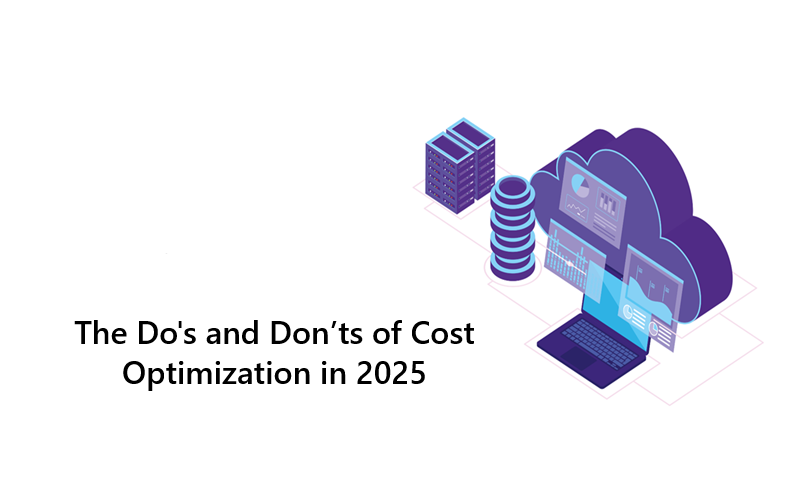
The Revolutionized Journey of DevOps Consulting Services
July 24, 2025
List of Tool Partners Supporting DevOps Consulting Services
August 13, 2025Whether it’s for corporate use or a personal endeavor, it’s easy to appreciate how cloud services provide remarkable power, flexibility, and convenience. But here’s a twist: Utilizing cloud services can incur a very steep fee, especially at the end of the month. This is exactly where Cloud Cost Optimization comes into play, which is simply an optimization strategy focused on reducing cloud expenditures.
Developers, business owners, or even tech-savvy individuals looking for cost-cutting measures will be guided through the cloud cost reduction techniques in this blog. So, stay tuned to learn new approaches to cutting back on your cloud bills while boosting your bills, and boosting your performance.
What is Cloud Cost Optimization?
Cloud Cost Optimization refers to the effective utilization of resources to manage expenditures on cloud services, meaning using just what you need. This involves selecting the proper service tier and paying the least possible while still achieving the desired service levels.
It’s not just about saving dollars and cents; it’s about achieving maximum efficiency for the cloud services in use. This way you save money while increasing productivity and reaping all the benefits of the cloud.
A Few Best Practices For Optimizing Cloud Costs
Now, let’s go over some best practices that are easy to follow, that everyone using cloud services should be aware of. These practices assist users in making better decisions and avoiding unnecessary expenses. Treat these as rules that let you breathe easy while minimizing cloud services expenditure.
1. Adjust Your Resources Effectively
To feel “safe,” some of us might opt for bigger storage space or bigger servers. This, however, can be very costly. That’s when Cloud allows clients to scale their infrastructure up and down, giving them flexibility in power, storage, and processing capabilities.
In addition, constantly monitoring and refining how your apps, servers, and databases perform helps in optimizing their size relative to your actual needs. With this, your expenses can significantly decrease, saving you hundreds or even thousands in the long run.
2. Remove Unused Resources
Much like how electricity works, the cloud does too. With cloud services, when old virtual machines, backup servers, or test environments sit idly, you get charged.
This practice, called resource scheduling, serves the obvious purpose of not wasting money. It is important to ensure that the cloud is only billed when the services are being used.
3. Use Reserved Instances or Savings Plans
If you believe that you are going to be using a cloud service for a year or three, you might as well commit to that service in advance to reap all the benefits out there. Providers such as AWS, Azure, or Google Cloud have Reserved Instances or Savings Plans that offer huge discounts. If indeed you are using the service for the long run, it is just like long gym membership payments instead of per-visit payments.
4. Review Storage and Snapshot Use
Consider the tasks that a phone performs, such as taking photos and storing them; note that cloud storage serves a similar purpose. Users often overlook the fact that old backups and snapshots can pile up, and so, they need to be cleared.
All storage of data in the cloud comes at a fee, and so does the storage of files that are no longer needed. Regular reviews and maintenance help in deleting files that are outdated, and in the process, save the firm money.
5. Monitor and Set Budgets Based on Your Spending with Cloud Services
With cloud providers, you already have maximum spending control with their built-in monitoring tools. These tools alert you when spending increases and have built-in budgeting functions to ensure you stay in control.
Monitoring spending in the cloud allows you to detect and address budget-draining issues promptly. Regularly monitoring cloud spending is as intuitive as checking one’s mobile data to avert surpassing unused spending limits.
Exploring the Benefits of Cloud Spending Optimization
After reviewing best practices, it is also important to consider the rationale behind them. The following are the most glaring advantages of practicing cloud spending optimization.
1. It cuts your cloud bills (Massively!)
Cloud cost optimization offers a number of benefits, but the most significant of all is the savings, since you can spend only on what is helpful to your business, as opposed to what is wasteful. Or rather, it’s like putting to good use all the money you earn by finally canceling all the unused streaming subscriptions that you never watch.
2. Smart management of resources
As cloud spend optimization is a focus, it creates a new awareness with the team on what’s being utilized and what’s not, and as a result, what cloud resources are not being utilized is identified. A lot more is done and a lot more is saved.
3. App functions even better
Faster and smoother apps are a result of right-sized resources, as they are adding and removing resources when necessary. They are also saving the business more expenses if the apps are running on auto-scaling. Your apps are more responsive when everything is properly fitted, and the users are more reliable when it comes to your users’ expectations; that’s a better experience.
4. Better Financial Management
With monitoring tools and budgets set up, you are now able to plan your spending far better. With your business functions streamlined, you can now forecast business spending and proactively take steps to avoid surprise bills and unneeded guesswork, which supports better business forecasting and decision-making.
5. Increased Productivity of DevOps Teams
With platforms such as AWS DevOps Services, your development and operations teams can automate processes, enabling them to build features rather than dealing with cost management. This provides lots of opportunities for innovation and considerably reduces time spent on other tasks like worrying about who left the test server on!
In Conclusion!!
We’ve gone over the definition and the best practices of cloud cost optimization, as well as the key takeaways and benefits. Cost optimization does not require a reduction in services. It simply means using resources efficiently.
AWS DevOps Services, for example, can help reduce costs while improving workflows and applications if optimal resource management practices are followed. The best part is that it’s easy to implement, allowing you to start with small goals and monitor your progress. The cloud is great, and with improvements to spending, it’s better for the budget.



